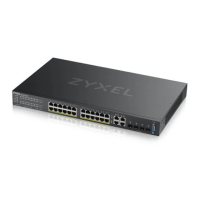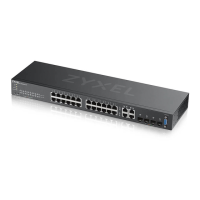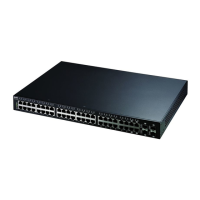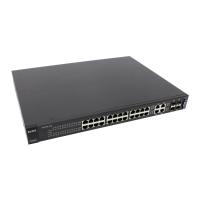Chapter 63 Security
GS2220 Series User’s Guide
499
C HAPTER 63
Se c urity
63.1 Ac c e ss Co ntrol
A console port and FTP are allowed one session each, Telnet and SSH share nine sessions, up to five Web
sessions (five different user names and passwords) and/or limitless SNMP access control sessions are
allowed.
A console port access control session and Telnet access control session cannot coexist when multi-login
is disabled. See the CLI Reference Guide for more information on disabling multi-login.
This section describes how to control access to the Switch.
63.1.1 Wha t You C a n Do
• Use the Lo g ins screen (
Section 63.2 on page 499) to assign which users can access the Switch through
Web Configurator at any one time.
• Use the Re mote Ma na g e m e nt screen (Section 63.3 on page 501) to specify a group of one or more
“trusted computers” from which an administrator may use a service to manage the Switch.
• Use the SNMP screen (Section 63.4 on page 503) to configure your SNMP settings.
• Use the Se rvic e Ac c e ss Contro l screen (
Section 63.8 on page 510) to decide what services you may
use to access the Switch.
63.2 Se t Up Lo g in Ac c o unts
Up to five people (one administrator and four non-administrators) may access the Switch through Web
Configurator at any one time.
• An administrator is someone who can both view and configure Switch changes. The user name for
the Administrator is always a dm in. The default administrator password is 1234.
Note: It is highly recommended that you change the default administrator password (1234).
• A non-administrator (user name is something other than a dmin) is someone who can view and/or
configure Switch settings. The configuration right varies depending on the user’s privilege level.
Click Se c urity > Ac c e ss Contro l > Lo g ins to view the screen as shown.
Table 265 Access Control Overview
Console Port SSH Telnet FTP Web SNMP
One session Share up to 9 sessions One session Up to 5 accounts No limit

